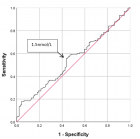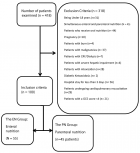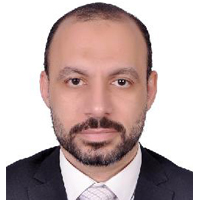Table of Contents
A comparitive study on square stepping exercise versus balance training exercises on fear of fall and balance in parkinsonism patients
Published on: 31st December, 2021
To study the effect of square stepping exercise and balance exercise to improve balance impairment and reducing the fear of falling on Parkinsonism patient. This is a pre-test and post-test experimental design comparative in nature. Subject aged between 60 – 70 years having Parkinson’s disease were included for the study. Group A (15 subjects) participated in square stepping exercise for 5 times in a week for 4 weeks and Group B (15 subjects) participated in balance exercise for 5 times in a week for 4 weeks. The outcome was measured by using Berg balance scale, Time up and go (TUG) test and fall efficacy scale. Statistical analysis done by using pair ‘t’ test and unpair ‘t’ test showed that there is significant improvement in subject who underwent the square stepping exercise program compared to balance exercise on fear of fall and balance in parkinsonism patients. It is concluded that square stepping exercise group exhibited statistically significant improvement in Berg Balance Scale, Time up and Go test score and fall efficacy test score compared to the balance training exercise group.
Evaluation of the effectiveness of transcranial electrostimulation in treatment of neuropsychiatric disorders
Published on: 17th August, 2021
OCLC Number/Unique Identifier: 9272357891
Objectives: Evaluation of the effectiveness the method of transcranial electrostimulation in treatment of neuropsychiatric disorders with the use of a patches by the company “Aganyan”.
Materials and methods: The study was a double-blind, randomized, placebo-controlled study, participated 106 patients with neuropsychiatric disorders. All participants in were divided into tables according to gender, age and diagnosis. Each subject was given the “Aganyan” patches and a special brochure, in which the method of application was indicated in detail. The wearable patch includes a flexible substrate, a binder an adhesive layer, with an electrode foil attached to it. Patients applied one patch behind each ear. The patches were applied for eight hours every third day for three months.
To assess the effectiveness of therapy in patients the following tests were used: The Montreal Cognitive Assessment Scale; MMSE Scale: Concise Mental Status Scale; diaries of observation of the patient’s condition to identify side effects; special brochures in which the subjects independently indicated the effects of the “Aganyan” patches. Tests were performed before and after the use of the “Aganyan” patches.
Results: When using the patches of the “Aganyan” company, none of the participants in the study had any side effects; According to the results of the Montreal test according to the criterion of memory and the MMSE test, the effectiveness of the patch was noted in patients with all clinical diagnoses. The greatest positive dynamics was revealed according to the results of the Montreal test according to the criterion of memory in patients with migraine (30%), insomnia (31%), vascular dementia (32%), and according to the results of the MMSE test in patients with diagnoses: cerebrovascular disease: consequences of a cerebral infarction brain (31%), vascular dementia (56%).
Conclusion: The patches of “Aganyan” company have proven its effectiveness through electrical stimulation with low-intensity current in patients in different age groups with different clinical diagnoses.
Comparative efficacy of inspiratory, expiratory and combined respiratory muscle training on the pulmonary functions and chest expansion in acute stroke survivors
Published on: 16th July, 2021
OCLC Number/Unique Identifier: 9137661170
Background: Respiratory muscle strength can be reduced in patients diagnosed with stroke, which reasonably justifies the use of respiratory muscle training in this population. This study determines the comparative efficacy of inspiratory, expiratory, and combined respiratory muscle training on the pulmonary functions and chest expansion in acute stroke survivors.
Method: Forty-five acute stroke survivors (15 in each group) completed all protocols of the study. Participants were randomly assigned to any one of three groups. In addition to the conventional exercise therapy, participants received any one of the three respiratory muscle training protocols (inspiratory muscle training, expiratory muscle training or combined respiratory muscle training). Chest expansion was assessed using tape measure and pulmonary function parameters were assessed using a spirometer.
Results: Paired t-test analysis showed significant improvements in the chest expansion and the pulmonary function parameters following training in each group. One-way ANOVA showed significant improvements in the pulmonary function parameters across the three groups but not in the chest expansion with p - value = 0.405. Least significant difference (LSD), post-hoc analysis shows that the significant difference for FEV1, FVC and FEV1/FVC lies between inspiratory muscle training group and expiratory muscle training group.
Conclusion: When the three training methods were compared, it was found that expiratory muscle training was the most beneficial in improving the pulmonary functions and chest expansion in acute stroke survivors.

HSPI: We're glad you're here. Please click "create a new Query" if you are a new visitor to our website and need further information from us.
If you are already a member of our network and need to keep track of any developments regarding a question you have already submitted, click "take me to my Query."


















































































































































